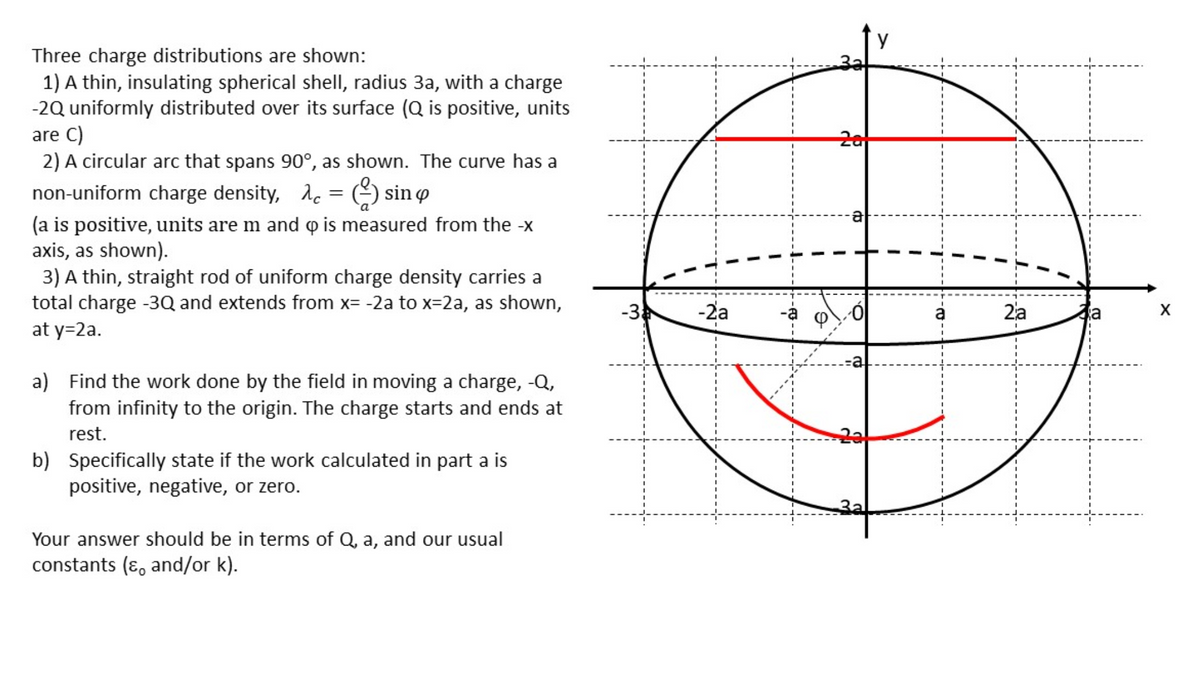a) Find the work done by the field in moving a charge, -Q, from infinity to the origin. The charge starts and ends at rest. b) Specifically state if the work calculated in part a is positive, negative, or zero.
a) Find the work done by the field in moving a charge, -Q, from infinity to the origin. The charge starts and ends at rest. b) Specifically state if the work calculated in part a is positive, negative, or zero.
Related questions
Question

Transcribed Image Text:Three charge distributions are shown:
1) A thin, insulating spherical shell, radius 3a, with a charge
-2Q uniformly distributed over its surface (Q is positive, units
are C)
2) A circular arc that spans 90°, as shown. The curve has a
non-uniform charge density, Ac = () sin o
(a is positive, units are m and o is measured from the -x
axis, as shown).
3) A thin, straight rod of uniform charge density carries a
total charge -3Q and extends from x= -2a to x=2a, as shown,
at y=2a.
%3|
-3
-2a
2'a
a) Find the work done by the field in moving a charge, -Q,
from infinity to the origin. The charge starts and ends at
rest.
b) Specifically state if the work calculated in part a is
positive, negative, or zero.
Your answer should be in terms of Q, a, and our usual
constants (ɛ, and/or k).
Expert Solution
This question has been solved!
Explore an expertly crafted, step-by-step solution for a thorough understanding of key concepts.
This is a popular solution!
Trending now
This is a popular solution!
Step by step
Solved in 2 steps
